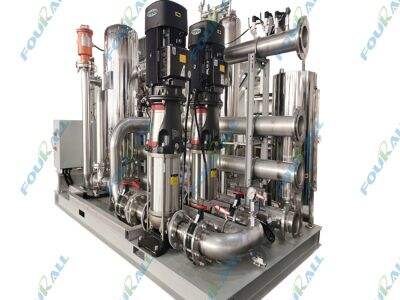What is Cooling?
Because electronics work like a computer, phone, or game console, while they are on they can overheat. We become hot when we run around or play outside, and electronics also become warm when they are functioning hard at their work. If they overheat, they can begin to crack or cease to function. That's why we need special methods of cooling them to keep them operating efficiently. Air cooling, and water cooling are two of the common methods to help cool electronics. So, let’s find out more on how these work as Cooling System.
How Does Air Cooling Work?
Air cooling is a common method using fans to cool down electronics. Think about a fan blowing air in your face on a hot day; it makes you feel cooler. Air cooling systems operate on roughly the same principles; they have fans that blow air over the hot components of the electronics. The movement of the air is used to pull heat away from the electronics. This is significant because heat can cause issues if it sticks around. But that might not always be enough. How some powerful electronics put out a vast amount of heat and may need more than one fan to chill them down quickly enough. So, air in cooling system does help, but it isn't a universal solution to all electronics.
What About Water Cooling?
Another method for keeping electronics cool is with water cooling, which operates a little differently. This is a liquid cooling system that has a pump for circulating water through pipes that enter the electronics box, across the hot parts. The water is very effective at absorbing heat from these areas. Once the water absorbs the heat, it goes to a device called a radiator. That’s where the water sheds the heat to the air, allowing it to cool down before it returns to the electronics. Water cooling can outperform air cooling, as water can absorb so much more heat than air can. Parker said that this means water can for longer keep the electronics cooler.
Parts of Cooling Systems
Air-cooling systems and water-cooling systems have different components that help them work properly. A heatsink is a component found in air cooling systems. The heatsink helps direct heat away from the electronics. Aluminum is a good heat conductor, so it works well for heatsinks.
Water cooling systems, on the other hand, consist of a few key components as well. These include a radiator, a water block, and a pump. The water block is the component that contacts the hot electronics and allows the water to pick up the heat from them. The water pump is what circulates the water through the whole cooling system ensuring it moves smoothly. And finally the radiator cools the water before it returns back to the electronics, so it can absorb more heat again when needed.
Why is Water Cooling Better?
Some of the most common reasons why people believe water cooling is better than air cooling are: One reason: Water can hold more heat than air can. So water can absorb much more heat before water gets hot itself. Furthermore, water is a substantially better heat transfer fluid than air, permitting the restructuring of the electronics to stay at a safe temperature for longer. Thanks to these properties, the water cooling system are great at preventing the overheating.
How Does Water Cooling Work?
How Water Cooling Works To understand how water cooling works, we must first think about heat transfer. Heat always flows from a hot place to a cool place. As the water flows over a heated portion of the electronics, it picks up heat and warms up. The hot water flows through the system as mentioned, and eventually gets to the radiator, it then gives off the heat in the surrounding hotter air. This is the reason that water cooling structures are more productive at suppressing hardware than air cooling structures.
NanJing Fourall Water Cooling Systems
NanJing Fourall is one of the companies that coffer good quality water cooling systems. These systems are built to keep electronic devices cool to prevent them from overheating. NanJing Fourall’s water cooling systems come with all components necessary to implement an efficient cooling solution. With these systems in place, you can rest assured that your electronics will not overheat. Which allows to run chiaramanteso and efficiently for a lot of years without any problems.
In Summary
To sum up, air cooling and water cooling are critical in maintaining the temperature of electronics. The air-cooling system utilizes fans to blow air over hot components and the water-cooling-based systems using water for heat absorption. Water cooling is also preferred since water has a much higher heat absorbance than air. Keep Your Electronics Running For Years: NanJing Fourall Water Cooling Systems.
 EN
EN
 AR
AR
 FR
FR
 DE
DE
 HI
HI
 IT
IT
 JA
JA
 KO
KO
 PT
PT
 RU
RU
 ES
ES
 TR
TR







